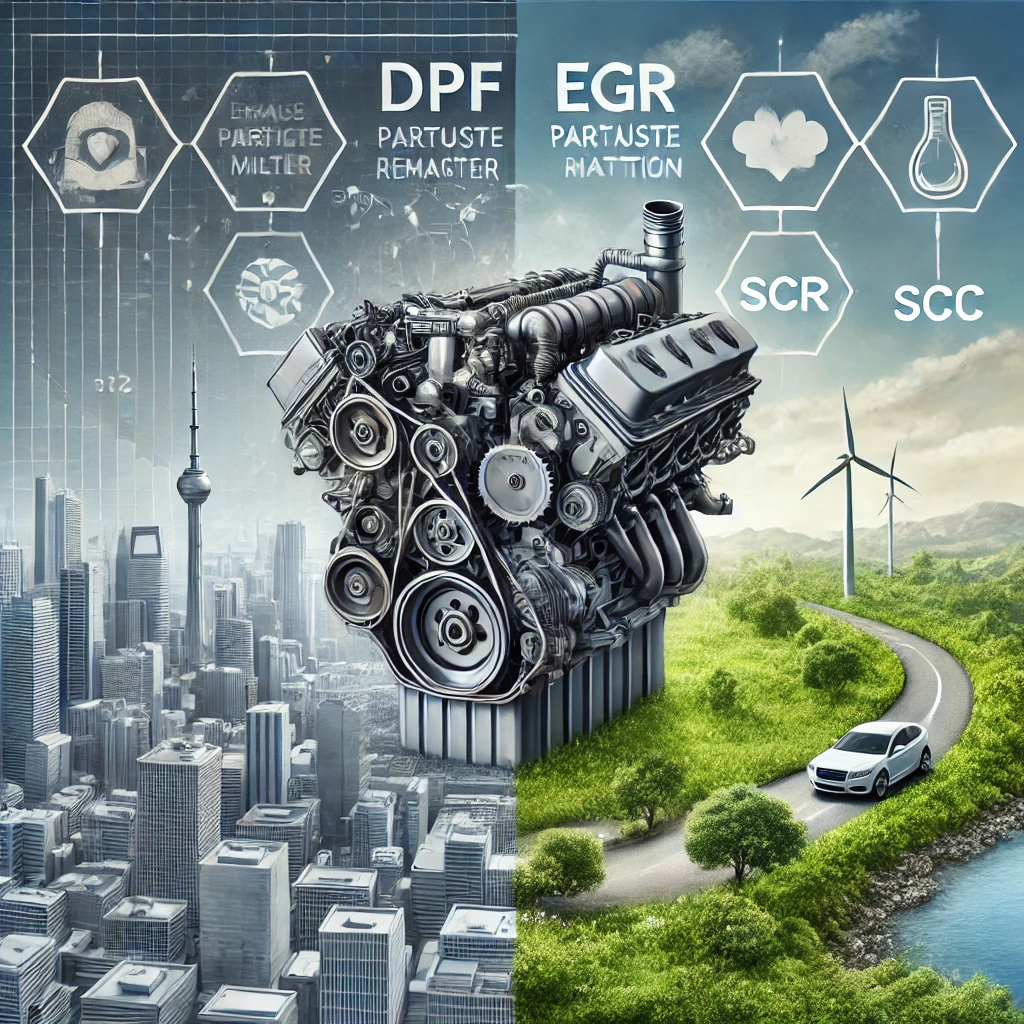Diesel engines are highly thermally efficient and durable, but they also emit a lot of harmful substances such as fine dust and nitrogen oxides. To reduce this, technologies such as DPF, EGR, and SCR have been developed, and efforts are ongoing to reduce environmental pollution by considering the advantages and disadvantages of each and finding the optimal combination.
Compared to gasoline engines, diesel engines generally emit less carbon dioxide, have higher thermal efficiency, and are more durable. However, diesel engines produce a lot of particulate matter, known as fine dust, and nitrogen oxides, such as nitrogen monoxide and nitrogen dioxide. These substances are a major contributor to respiratory diseases such as bronchitis and pneumonia, photochemical smog and acid rain. As a result, technologies are being developed to reduce the pollutants emitted by diesel engines.
Characteristics of diesel engines and emission reduction technologies
The main technology for dealing with particulate matter is the diesel particle filter (DPF). This method captures particulate matter from the exhaust by a filter, and the accumulated material is removed by burning it at a certain point to restore the filter’s function. In order to burn the captured particulate matter, the engine cylinders must be fueled so that fuel can flow to the filter. Once fuel is supplied, the exhaust mixes with the fuel and combusts in the filter. While DPFs are easier to manufacture because they don’t require any engine modifications, they are less fuel efficient because they only require additional fuel, and they require additional technology to reduce nitrogen oxides.
One technology that reduces nitrogen oxides is exhaust gas recirculation (EGR). This is a technology that recirculates exhaust gases back into the engine and then burns fuel along with the exhaust gases to lower the combustion temperature. The reason for reducing the combustion temperature by recirculating exhaust gases back into the engine is that the production of nitrogen oxides is reduced when fuel is burned at a lower temperature. However, lowering the combustion temperature results in higher particulate matter emissions, so EGR is used in conjunction with DPF. The disadvantage of EGR is that it can cause impurities to build up in the engine and reduce power output.
Recently, selective catalytic reduction (SCR), which is more efficient at reducing nitrogen oxides than EGR, has been developed and is replacing EGR. Since SCR does not recirculate the exhaust gas, the combustion temperature in the engine is higher than that of EGR. This results in less particulate matter and more nitrogen oxides. SCR uses ammonia to reduce nitrogen oxides. However, ammonia is explosive, can corrode metals, and has a peculiar irritating odor at room temperature, which is unpleasant. Therefore, its use is limited and requires careful handling.

How SCR works and its advantages
To solve these problems, the SCR method uses a separate urea water tank that supplies urea water dissolved in water and a compressed air injector that supplies air to induce the following chemical reactions in the SCR unit. Urea is decomposed into ammonia and isocyanuric acid through pyrolysis, and isocyanuric acid is hydrolyzed to produce carbon dioxide and ammonia. Nitrogen monoxide, along with the resulting ammonia, reacts with oxygen in the air to form nitrogen and water. Nitrogen dioxide, together with nitrogen monoxide, then reacts with the ammonia to turn it into nitrogen and water.
The inside of the SCR unit, where the chemical reactions take place, is made of metal catalysts, such as platinum or vanadium, which adsorb the reactants. In order for SCR to be efficient, the exhaust must remain on the surface of these catalysts for a long time, which means slowing down the space velocity so that the chemical reactions have enough time to take place. The space velocity is the volume of exhaust fed per unit of time divided by the volume of catalyst in the SCR unit.
Challenges and future prospects for SCR
While SCR is becoming increasingly popular due to its high abatement efficiency, it does have its challenges. Ammonia slip, in which ammonia is discharged along with the exhaust gas, can occur, and the decomposition of urea at low temperatures produces solids such as amelin and melamine, which can adhere to the inside of pipes and device surfaces. The buildup of these solids can also reduce the efficiency of the system and increase maintenance costs. To prevent this, it is important to maintain proper system temperatures and perform periodic inspections and cleaning.
Emission reduction technologies for diesel engines continue to evolve with increasingly stringent environmental regulations. DPF, EGR, and SCR technologies each have their advantages and disadvantages, so it’s important to find the optimal combination to reduce emissions as much as possible. While the role of diesel engines is likely to decrease, especially with the rise of electric and hybrid vehicles, diesel engines still play an important role in heavy-duty and commercial vehicles. Efforts will continue to be made to make diesel engines more efficient and less polluting by combining them with cleaner technologies.
 I’m a blog writer. I want to write articles that touch people’s hearts. I love Coca-Cola, coffee, reading and traveling. I hope you find happiness through my writing.
I’m a blog writer. I want to write articles that touch people’s hearts. I love Coca-Cola, coffee, reading and traveling. I hope you find happiness through my writing.